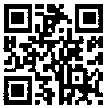Recently I came across a brave video of him teaching his class with his pants down - not literally, I assure you...but for a lot of teachers not having a table to lean on or a book to prop us up, 'dogme' means the same thing. Dogme is a bit of a buzzword at the moment, and seems to be the Marmite opposite to Web 2.0. You either like one or t'other.
Personally, I can't see the point of slagging one approach off, when maybe next week another angle of attack will work just as nicely! For example, my students rely heavily on their books...when I want them to become a bit more independent I often move books (open) to the far end of the room. Same with electronic dictionaries (I hate them with a passion!). If students want to have a peek, they can, but it is just enough of a nuisance to go and do so, that a remarkable flash of inspiration or memory comes to the rescue. Funny how that works. However, they'd find it very hard to join up their learning without a book at all (and find it intimidating). I do not have enough tricks up my sleeves to bedazzle every lesson, either.
I enjoyed the view from the other end of our classroom table, handily next to the coffee & biscuits. I offered them a verb from our list, and asked them to move to the /to/ side or the /ing/ side of the board (or the middle, one or two take both of course). I enjoyed the "I'm right/you're wrong" that this produced, and the kudos it gave the less able students who had done their reviewing properly versus those that had not done it thoroughly.
Once the grammar was agreed (checked at the annoyingly distant book if necessary - I was tempted to charge for this/add an element of gambling...next time perhaps) students were then challenged to quickly come up with a suitable sentence using the verb properly. I didn't say anything, but pulled a face or used my body language if I heard something a bit out of place - encouraged them to look at their listener, to listen to each other closely, & to be competitive/nick each others threads.My plan was to do this for about ten minutes, but they got so animated I let it run - standing up they were gesturing a lot more than usual, interrupting each other, and reacting much more forcefully. They were visibly annoyed when we ran out of words!
Fortunately, Martin does not run out of words. Check out his blog some time - your students won't notice but you might get an extra cup of coffee out of it!



Many thanks for referring to my blog post. It is greatly appreciated. It is nice to see you adopting this form of teaching. I totally agree that Web 2.0 should not be completely forgotten (and the same with Dogme ELT). Personally, I don't know how teachers can only incorporate one approach within their teaching and use another. I feel that one-approach teaching may become very stale for students. I guess the question that is asked is: are you a one club golfer or do you have a range of clubs for the classroom?
ReplyDelete